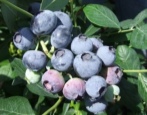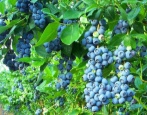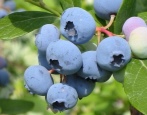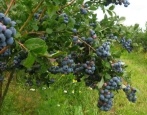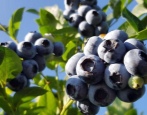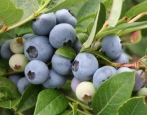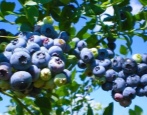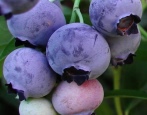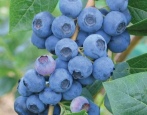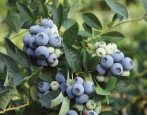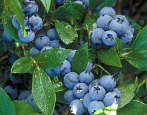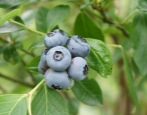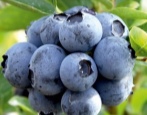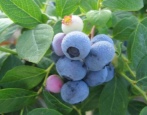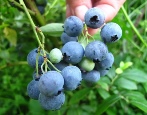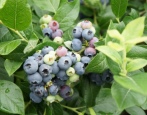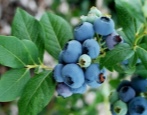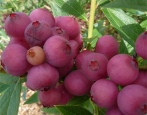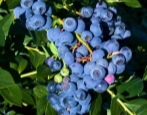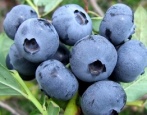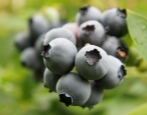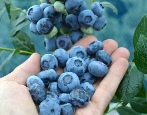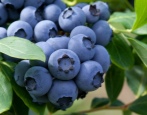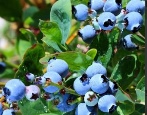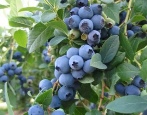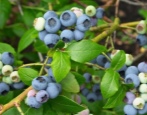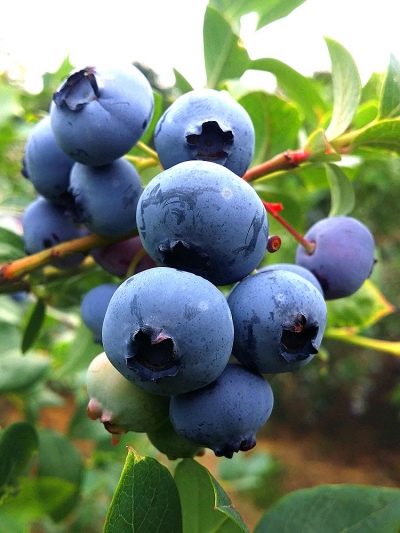
- Ripening terms: early
- Growth type: tall
- Bush height, m: up to 1.6
- Taste: tart-sweet with a sour aftertaste
- Yield: high
- Average yield: up to 7 kg per bush
- Fruit size: large
- Fruit shape: slightly flattened
- Fruit color: dark blue, with a bright bluish bloom
- Description of the bush: slightly spreading
Hannah's choice blueberries are an excellent choice for planting in summer cottages in southern latitudes. The unpretentious culture takes root well in cool climates, its fruits have a universal purpose, they tolerate transportation well.
Breeding history
The variety was obtained by American breeders in New Jersey in 1978. In the process of breeding a hybrid, blueberry seedlings Bluecrop, Erliblu, Berkeley were used.
Description of the variety
The bushes are tall, reaching a height of 1.6 m. Slightly spreading in shape, with upward shoots. Fruit clusters are long, of medium density. The root system is fibrous. The leaves on the shoots are long, up to 80 mm, oblong, colored green.
Fruit characteristics
Blueberries of this variety are large, slightly flattened, about 25 mm in diameter. The weight of each is 2 g, a loose bunch can reach a weight of 400-600 g. The peel of the berries is strong, dark blue, has a bright and well-visible bluish bloom. The pulp is light. The fruits do not crumble, tolerate storage well, and are suitable for freezing.
Taste qualities
The berries are highly appreciated by the tasters. They are tart-sweet, with a sourish aftertaste, they are great in desserts. There is a delicate aroma. The dense, fleshy pulp conveys well the subtle nuances of the taste of the fruit.
Ripening and fruiting
Early variety with annual fruiting frequency. Ripe berries are harvested in July. Bushes begin to bear fruit 3 years after planting.
Yield
This blueberry is a high-yielding variety. Up to 7 kg of ripe berries are collected from the bush.
Growing regions
The variety is zoned for cultivation in the south of Russia. It is also successfully cultivated in Belarus, Ukraine.
Self-fertility and the need for pollinators
Hannah Choice is a self-fertile blueberry. She does not need to plant pollinating plants nearby.
Growing and care
For planting, it is recommended to choose Hanna Choice blueberry bushes that have reached the age of 2-3 years. They take root better, quickly enter fruiting. Planting is carried out in the spring, before bud break. The variety is hygrophilous, needs regular watering. It is carried out during dry periods 2 times a week, 10 liters of water under each bush.
Top dressing is carried out three times during the warm season. Additional nutrients are added at the budding stage, then after flowering and during the ripeness period. The best food for Hannah Choice is ammonium sulfate.
Annual pruning helps to maintain the large size of the berries. The procedure is performed with a pruner starting from the 6th year of the life of the bush. For sanitary purposes, small lateral shoots in the root zone, as well as damaged and diseased branches, are removed.

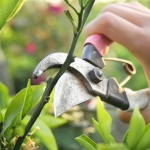
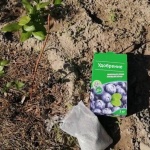
Disease and pest resistance
Plants are not distinguished by high resistance to fungal diseases. Bushes should be regularly inspected for early signs of leaf spot. In hot periods, a bark burn may occur. Pests and slugs must be hand-picked or controlled with chemicals.
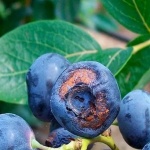
Winter hardiness and the need for shelter
Plants are distinguished by high winter hardiness. Without shelter, they successfully withstand a drop in atmospheric temperatures down to -37 degrees. Return frosts are tolerated without loss.

Location and soil requirements
Blueberries of this variety grow well on acidified soils. Peat soil is the best choice. Plants need a lot of light, they cannot be shaded. A strong wind can also damage bushes.
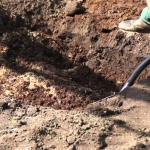
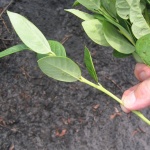
Review overview
For most summer residents, Hannah Chois blueberries are an attractive exotic. This variety is suitable even for inexperienced gardeners, it is easy to grow, gives abundant yields with minimal maintenance. Harvesting is easy due to the fact that the berries are combined in bunches. Gardeners consider the taste of this blueberry to be delicious and give it the highest marks. Many people use berries in desserts and grow them for sale.
Experienced gardeners note that Hannu Chois should not be planted with small intervals between the bushes. If you do not follow this rule, you will have problems with branches tangling. Slugs are also very fond of ripening blueberries. During periods of high humidity, fighting them is time-consuming.
